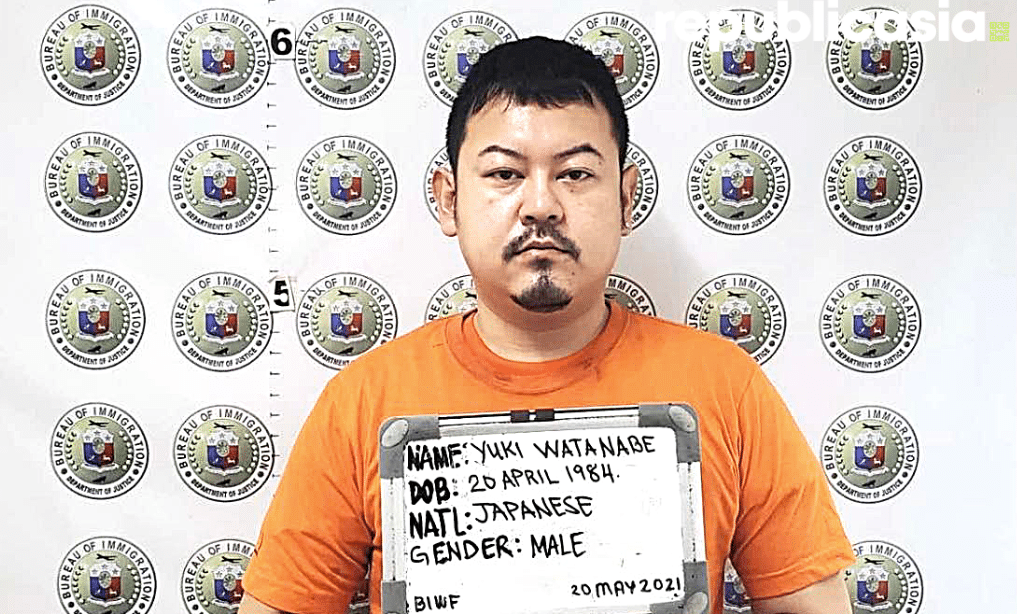He goes by the code name “Luffy” — a fictional character in the anime One Piece manga series.
Using Telegram, a highly encrypted smartphone messaging app, Luffy would scout for gang members in Japan.
He then ordered ring leaders to do break-ins. Under his command, at least 20 robberies in 14 prefectures were committed last year alone.
While 30 robbers were arrested associated with the “Luffy” mafia, the mastermind remains elusive.
Then, a 90-year old woman was killed when one of the robbers broke into her home in Komae in Tokyo last January 19. This shocked Japan, one of the most peaceful countries with a third of its population now in their senior years.
The Japanese National Police Agency widened its dragnet and found “Luffy” the mastermind. He is inside a Philippine jail.
Aside from Luffy, two of his other cohorts were also inside the Philippine detention center — a certain Kim and Mitshuhashi.
Who is Luffy?
Luffy is Yuki Watanabe, also known as Kenji Shimada or Shi Shimada. He is 38 years old, a Japanese national, already in the International Police (Interpol) list of wanted criminals in 2020.
In May 2021, agents of the National Bureau of Investigation and Bureau of Immigration arrested Watanabe inside a posh hotel in Pasay City. His two other Japanese colleagues identified as Tomonobu Santos and Kousuke Il were also arrested. Later, Kousuke was released for lack of probable cause.
He was described as the “big boss” of the largest telecommunication fraud syndicate, whose international operations cover several counties, including Japan and the Philippines, reports said.

Inside BI detention
Watanabe has a pending criminal case — violence against women and children — filed in a Pasay City court.
He can not be deported yet unless the case has been resolved.
So while waiting for the resolution of his case, Watanabe is detained inside immigration holding facility in Taguig.
But inside, he has access to mobile phone and internet connection, that apparently facilitated his mafia operation in Japan albeit remotely.
Japanese state TV broadcaster NHK interviewed a South Korean man who spent time inside Philippine immigration facility. He said detainees paid US$1,500 (Php 81,000) a month to be able to use a private room with air conditioning.
During his stay in 2019, Japanese and Korean detainees use the private room so they won’t be bothered with their telephone fraud operations. They also have unrestricted access to mobile phones and laptops
BI warden to confiscate mobile device of wards
It was still unclear how the suspects got hold of mobile phones.
But immigration officials insisted that the use of any communication device has been restricted inside the detention facility.
The Department of Justice said they have instructed the warden of the BI to “strictly monitor and prohibit the use of mobile device.”
The BI Warden or his representative is instructed to confiscate any communication device being used by any ward in the facility.
DOJ stepping in
As this is a high profile case in Japan, DOJ spokesman Mico Clavano said they are now stepping in the case of Watanabe.
Another suspect named Imamura Kiyoto, one of Watanabe’s gang members, is also languishing inside the same facility. He is wanted in Japan for theft and is set to be deported anytime soon.
“We have to verify the information first. Of course, everything that we do in the department has to be verified and confirmed before we give relevant and accurate details. So, I know it’s a big case and we will take necessary steps to make sure that everything is done smoothly and we get to the bottom of it,” Clavano said.
Extradition to Japan
Asked if the Philippine government will deport Watanabe and other suspects, and when, Clavano said:” We have to do step by step. We have to look at facts first. We only found out about the case yesterday (Friday). I can’t give you specific timelines but I can assure you we work fast. We will move fast.”
He said the department is still waiting for the request coming from the Japanese government if the latter wants to speed up the deportation process.
“If ever they (Japanese authorities) want to extradite, they have to make a request, but so far no special request. Will wait for updates first from all agencies concerned,” he said.
Waiting time 1-3 months
In any case, Clavano said the deportation process may take from one month to as long as three months depending on the outcome of the inquiry.
“Different modes of deportation have different timelines. If you have full-blown deportation, there’s going to be hearing, you’ll ask the other side to comment and then they will evaluate, and then they will deport,” he said.
“It’s an average of three months for a full-blown deportation process and as fast as 30 days for a summary deportation (proceedings),” he added.
banner photo courtesy: Bureau of Immigration







